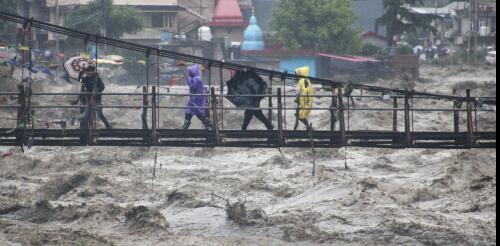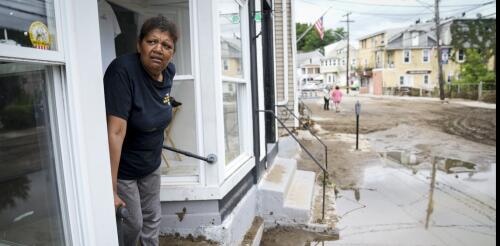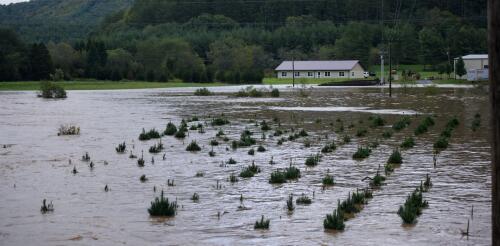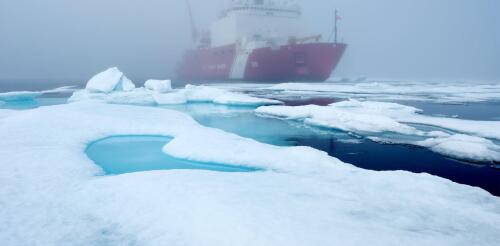Rainfall
Torrential downpours sent muddy water racing through streets in Libya, Greece and Spain and flooded parts of Hong Kong and New York City in September 2023. Thousands of people died in the city of Derna, Libya. Zagora, Greece, saw a record 30 inches of rain, the equivalent of a year and a half of rain falling in 24 hours. A few weeks earlier, monsoon rains triggered deadly landslides and flooding in the Himalayas that killed dozens of people in India. After severe flooding on almost every continent this year, including mudslides and flooding in California in early 2023 and devastating floods in Vermont and New York in July, it can seem like extreme rainfall is becoming more common. So, what role does global warming play in this? And importantly, what can we do to adapt to this new reality? A powerful storm system in 2023 flooded communities across Vermont and left large parts of the capital, Montpelier, underwater. John Tul...
Powerful storm systems that hit the U.S. Northeast starting July 9, 2023, dumped close to 10 inches of rain on New York’s Lower Hudson Valley in less than a day and sent mountain rivers spilling over their banks and into towns across Vermont. Vermont Gov. Phil Scott said he hadn’t seen rainfall like it since Hurricane Irene devastated the region in 2011. Extreme water disasters like this have disrupted lives in countries around the world in the past few years, from the Alps and Western Europe to Pakistan, India and Australia, along with several U.S. states in 2022 and 2023. The role of climate change is becoming increasingly evident in these types of deluges. Cars were stranded in floodwater on the campus of the United States Military Academy at West Point, N.Y., on July 10, 2023. U.S. Military Academy via AP Studies by scientists around the world show that the water cycle has been inte...
Hurricane Helene caused deadly and destructive flooding when it swept through the Southeast on Sept. 26-29, 2024. Across a broad swath of western North Carolina, where the worst flooding occurred, the amount of rainfall exceeded levels that would be expected on average only once every 1,000 years. But this wasn’t the first 1,000-year rainstorm in North Carolina this year. In mid-September, an unnamed slow-moving storm produced more than a foot of rainfall closer to the Atlantic coast. This storm inundated areas that had already been drenched by Tropical Storm Debby in August. As atmospheric scientists and state climatologists, we believe it’s important for the public to understand the risk that extreme events may occur. That’s especially true as climate change alters the conditions that create and feed storms. Here’s how scientists calculate storm probabilities, and why events like a 1,000-year storm can happen much more frequently in some places than tha...
Flash droughts develop fast, and when they hit at the wrong time, they can devastate a region’s agriculture. They’re also becoming increasingly common as the planet warms. In a new study published May 25, 2023, we found that the risk of flash droughts, which can develop in the span of a few weeks, is on pace to rise in every major agriculture region around the world in the coming decades. In North America and Europe, cropland that had a 32% annual chance of a flash drought a few years ago could have as much as a 53% annual chance of a flash drought by the final decades of this century. The result would put food production, energy and water supplies under increasing pressure. The cost of damage will also rise. A flash drought in the Dakotas and Montana in 2017 caused US$2.6 billion in agricultural damage in the U.S. alone. Stunted corn in Nebraska struggles to grow during the 2012 flash drought that covered much of the cent...
Atmospheric rivers, those long, powerful streams of moisture in the sky, are becoming more frequent in the Arctic, and they’re helping to drive dramatic shrinking of the Arctic’s sea ice cover. While less ice might have some benefits – it would allow more shipping in winter and access to minerals – sea ice loss also contributes to global warming and to extreme storms that cause economic damage well beyond the Arctic. I’m an atmospheric scientist. In a new study of the Barents-Kara Seas and the neighboring central Arctic, published Feb. 6, 2023, in Nature Climate Change, my colleagues and I found that these storms reached this region more often and were responsible for over a third of the region’s early winter sea ice decline since 1979. More frequent atmospheric rivers By early winter, the temperature in most of the Arctic is well below freezing and the days are mostly dark. Sea ice should be growing and spreading over a wider area. Yet the...




